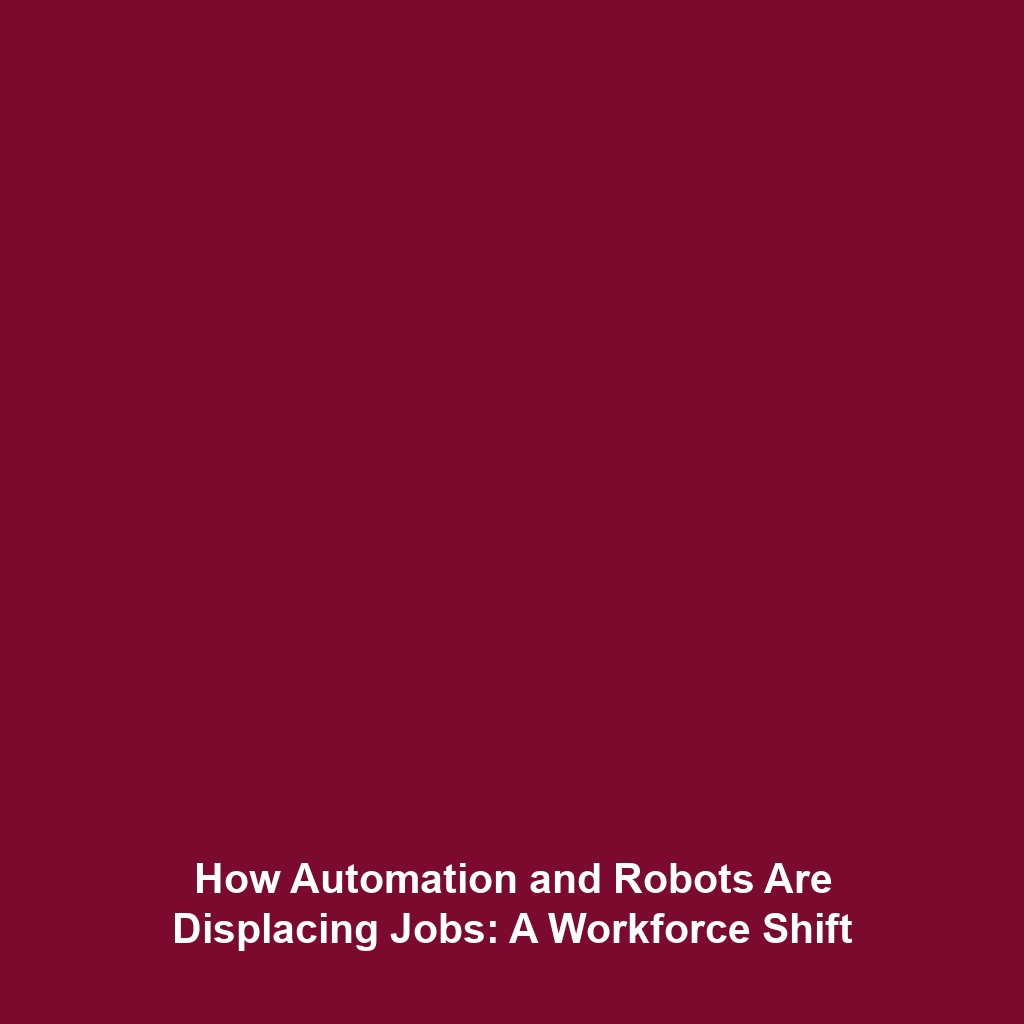Job Displacement and Automation: The Impact of Autonomous Robots on the Workforce
As we rapidly advance into the era of automation, the rise of autonomous robots is reshaping industries and redefining the workforce landscape. The significance of exploring job displacement and automation cannot be overstated, as these technological advancements pose challenges and opportunities for both workers and employers. Understanding how autonomous robots influence job displacement is vital for preparing for the future economy. This article delves into the impact of autonomous robots on employment, providing insights into key concepts, applications, challenges, and future directions in this pivotal domain.
Key Concepts
The intersection of job displacement, automation, and autonomous robots introduces several core principles:
- Job Displacement: The immediate impact of technology on existing job roles, often leading to the reduction of jobs in specific sectors.
- Automation: The use of technology to perform tasks without human intervention, significantly increasing production efficiency.
- Autonomous Robots: Machines capable of carrying out tasks in real-world environments without or with minimal human oversight.
These concepts collectively influence the ongoing dialogue surrounding the future of work, workforce adaptation, and the skill sets required in an automation-driven economy.
Applications and Real-World Uses
Various industries are leveraging the power of autonomous robots, leading to significant applications that demonstrate the impact of job displacement and automation:
- Manufacturing: Robots automate assembly lines, reducing the need for human workers in repetitive tasks.
- Logistics and Warehousing: Autonomous robots, like drones and automated guided vehicles, streamline operations by efficiently moving goods.
- Healthcare: Robots assist in surgeries and patient care, reshaping roles within the medical profession.
These applications illustrate how job displacement through automation within autonomous robots continually transforms the labor market.
Current Challenges
Studying the impact of autonomous robots on job displacement introduces several challenges, including:
- Data Collection: Gathering accurate data on job displacement rates is often complex and fragmented.
- Skill Gaps: Workers may lack the necessary skill sets to transition into roles that complement automated systems.
- Public Perception: Societal fear and resistance towards automation can hinder progress and acceptance.
Future Research and Innovations
The future of job displacement and automation within the context of autonomous robots is poised for exciting developments. Key areas of research include:
- Human-Robot Collaboration: Exploring how workers and robots can effectively coexist in the workplace.
- Advanced AI Systems: Developing next-gen technologies that enhance the decision-making capabilities of autonomous robots.
- Policy and Ethics: Researching regulations that safeguard workers from the negative impacts of automation.
These innovations will play a crucial role in navigating the complexities of job displacement while maximizing the benefits of automation.
Conclusion
Job displacement and automation are critical dimensions that highlight the transformative power of autonomous robots on the workforce. As industries evolve and new technologies emerge, it is essential for stakeholders to engage in open discourse and proactive adaptations to prepare for the future. For more insights on how technology is reshaping industries, explore our related topics on automation trends and impact on workforce development.
